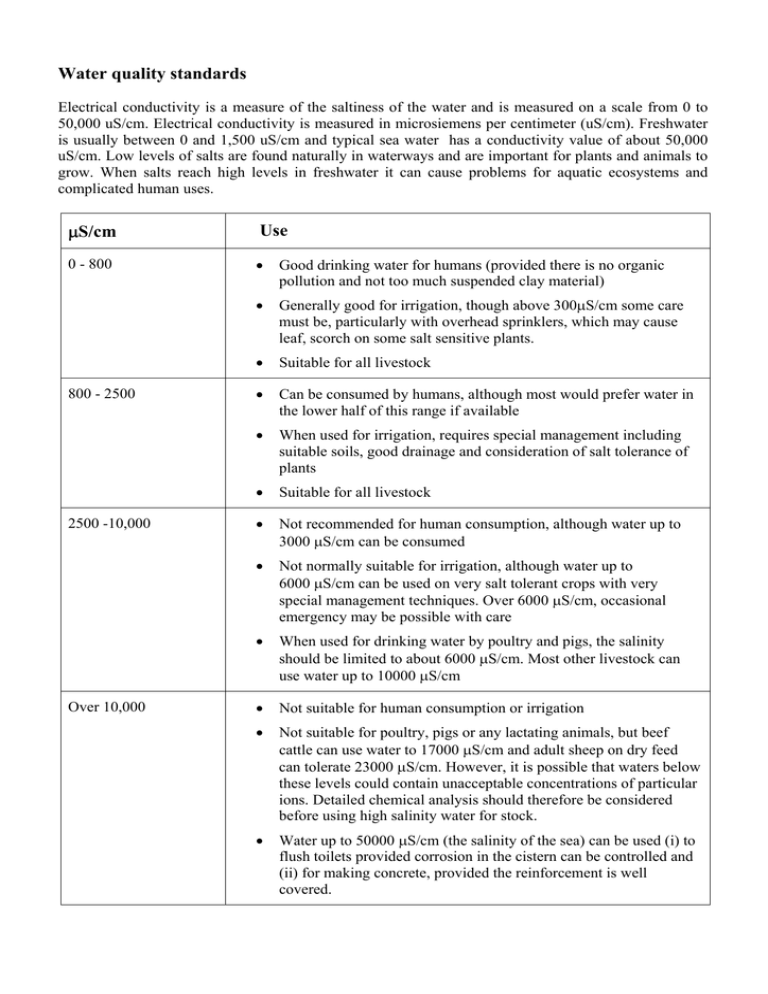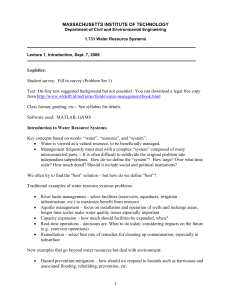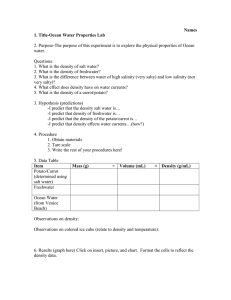Water Quality Salinity Standards
advertisement

Water quality standards Electrical conductivity is a measure of the saltiness of the water and is measured on a scale from 0 to 50,000 uS/cm. Electrical conductivity is measured in microsiemens per centimeter (uS/cm). Freshwater is usually between 0 and 1,500 uS/cm and typical sea water has a conductivity value of about 50,000 uS/cm. Low levels of salts are found naturally in waterways and are important for plants and animals to grow. When salts reach high levels in freshwater it can cause problems for aquatic ecosystems and complicated human uses. μS/cm Use 0 - 800 • Good drinking water for humans (provided there is no organic pollution and not too much suspended clay material) • Generally good for irrigation, though above 300μS/cm some care must be, particularly with overhead sprinklers, which may cause leaf, scorch on some salt sensitive plants. • Suitable for all livestock • Can be consumed by humans, although most would prefer water in the lower half of this range if available • When used for irrigation, requires special management including suitable soils, good drainage and consideration of salt tolerance of plants • Suitable for all livestock • Not recommended for human consumption, although water up to 3000 μS/cm can be consumed • Not normally suitable for irrigation, although water up to 6000 μS/cm can be used on very salt tolerant crops with very special management techniques. Over 6000 μS/cm, occasional emergency may be possible with care • When used for drinking water by poultry and pigs, the salinity should be limited to about 6000 μS/cm. Most other livestock can use water up to 10000 μS/cm • Not suitable for human consumption or irrigation • Not suitable for poultry, pigs or any lactating animals, but beef cattle can use water to 17000 μS/cm and adult sheep on dry feed can tolerate 23000 μS/cm. However, it is possible that waters below these levels could contain unacceptable concentrations of particular ions. Detailed chemical analysis should therefore be considered before using high salinity water for stock. • Water up to 50000 μS/cm (the salinity of the sea) can be used (i) to flush toilets provided corrosion in the cistern can be controlled and (ii) for making concrete, provided the reinforcement is well covered. 800 - 2500 2500 -10,000 Over 10,000






